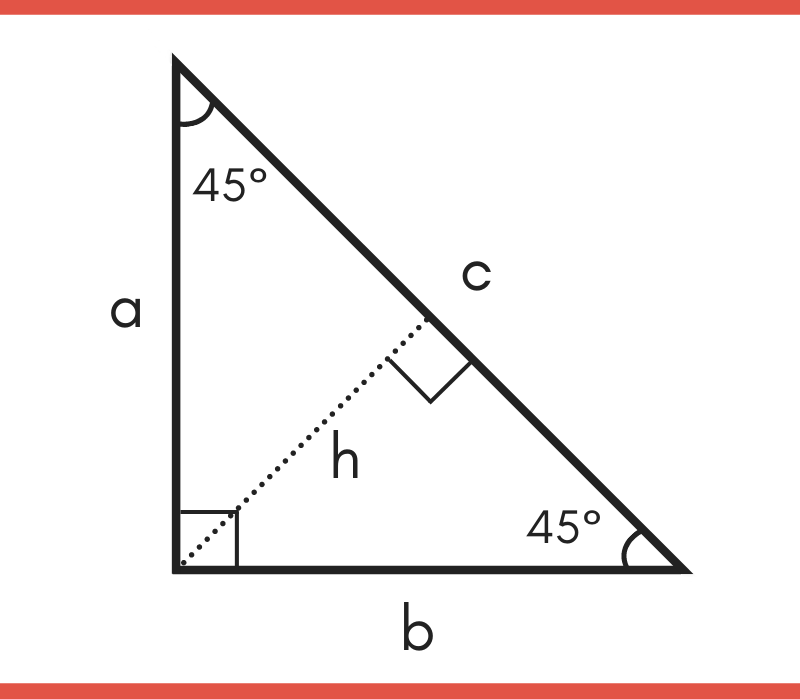

In a triangle of this type, the lengths of the three sides are collectively known as a Pythagorean triple. If all three sides of a right triangle have lengths that are integers, it is known as a Pythagorean triangle.

The altitude divides the original triangle into two smaller, similar triangles that are also similar to the original triangle. h refers to the altitude of the triangle, which is the length from the vertex of the right angle of the triangle to the hypotenuse of the triangle. In this calculator, the Greek symbols α (alpha) and β (beta) are used for the unknown angle measures. Their angles are also typically referred to using the capitalized letter corresponding to the side length: angle A for side a, angle B for side b, and angle C (for a right triangle this will be 90°) for side c, as shown below. The sides of a right triangle are commonly referred to with the variables a, b, and c, where c is the hypotenuse and a and b are the lengths of the shorter sides. In a right triangle, the side that is opposite of the 90° angle is the longest side of the triangle, and is called the hypotenuse. Right triangles, and the relationships between their sides and angles, are the basis of trigonometry.
#PYTHAGOREAN THEOREM AND SPECIAL RIGHT TRIANGLES HOW TO#
Then, you can learn how to find the third side of any triangle.Related Triangle Calculator | Pythagorean Theorem Calculator Right triangleĪ right triangle is a type of triangle that has one angle that measures 90°.

There are more advanced trigonometric functions that allow us to calculate the third side of a triangle, even non-right triangles, given a particular degree angle and side length.īut either way, practice applying the Pythagorean Theorem until you feel confident with right triangles. The Pythagorean Theorem helps us calculate the hypotenuse of a right triangle if we know the sides of the triangle. If we substitute it into the formula, we get:Īnd by taking the square root on both sides, we figure out that the hypotenuse c = 5! Here we know the length of the side ( a = 3 and b = 4). But for now, let's see an example where we know the length of the sides and want to find the hypotenuse: In fact, if we know the lengths for any two sides (leg A, leg B, and hypotenuse C) we can easily figure out the missing side by applying the formula. The Pythagorean Theorem states that for any right triangle, the sum of the squares of the lengths of the legs is always equal to the square of the length of the hypotenuse.īecause of the Pythagorean Theorem, it is easy to find the hypotenuse of a right triangle if we are given the sides of a right triangle. It related the length of the hypotenuse of a right triangle to the lengths of the legs (the legs of the triangle are the two shorter sides). The Pythagorean Theorem is a well-known theorem developed by a Greek mathematician named Pythagoras around 500 BC. If a problem asks you to calculate the length of hypotenuse c in a triangle with side a, side b, and hypotenuse c, then you are working with a right-angled triangle. It’s also the longest side of the triangle. "Hypotenuse" is simply a term that means "the longest side of a right triangle." The hypotenuse is the opposite side of the right angle in the triangle. Defining the Hypotenuseįirst, let's demystify this term. Let’s review this basic but foundational concept in trigonometry and how it relates to finding the hypotenuse of a right triangle.

Plus, we can use it to find the base of a special right triangle and apply the converse of the Pythagorean Theorem. It makes the question of how to find the hypotenuse of a right triangle is easy to answer. The Pythagorean Theorem is an important theorem, as it comes up often in high school math.


 0 kommentar(er)
0 kommentar(er)
